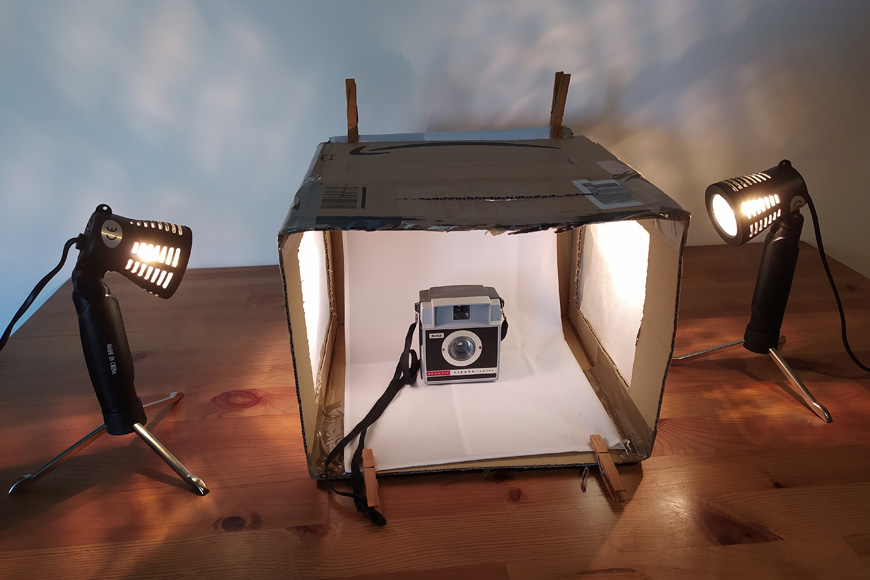In the world of photography, achieving beautiful and soft lighting is often the key to capturing stunning images. A soft lightbox is a versatile tool that can significantly enhance the quality of your photographs by providing even, diffused lighting. In this article, we’ll explore the process of creating a soft lightbox and share tips on how to effectively use it for various photography scenarios.
Creating Your Soft Lightbox:
Contents
Materials Needed:
Cardboard Box:
Choose a medium to large-sized cardboard box based on the size of the subjects you plan to photograph.
White Poster Board or Foam Board:
This will be used to line the interior of the box, creating a reflective surface for the light.
White Fabric or Diffusion Material:
To diffuse the light, use a thin, white fabric or specialized diffusion material. This could be a white bedsheet or a purpose-made diffusion panel.
Utility Knife or Scissors:
To cut openings in the box for the diffusion material and to create a seamless background.
Tape:
Use clear or white tape to secure the diffusion material, poster board, and to assemble the box.
Light Source:
Choose a soft light source such as a studio light, LED panel, or even natural light, depending on your preference and the available equipment.
Steps:
Prepare the Box:
Seal any unnecessary openings of the cardboard box using tape.
Cut out three sides of the box, leaving a frame on top for structural integrity.
Line the Interior:
Attach white poster board or foam board to the interior walls of the box using tape, creating a reflective surface for the light to bounce off.
Diffusion Material:
Cover the open sides of the box with white fabric or diffusion material, securing it with tape. This will soften and diffuse the incoming light, creating a gentle illumination.
Create a Seamless Background:
Cut the bottom of the box to create a seamless background. Extend the background material on the base to eliminate any visible edges.
Set Up Your Light Source:
Place your chosen light source outside the diffusion material, directing it toward the interior of the box. This ensures that the light is evenly spread and diffused.
Portrait Photography:
Positioning:
Place your subject in the center of the lightbox, ensuring that the diffused light creates soft shadows on the face.
Experiment with Angles:
Adjust the angle and distance of your light source to control the intensity and direction of the light. This flexibility allows you to create various lighting effects.
Product Photography:
Consistent Lighting:
The soft lightbox provides consistent and even lighting, making it ideal for showcasing products without harsh shadows or reflections.
Highlight Details:
Position the light source to highlight the key features of the product. The soft lighting enhances textures and details, creating visually appealing product images.
Macro Photography:
Controlled Lighting:
For close-up shots, the soft lightbox allows precise control over the lighting conditions. Experiment with different angles and distances to highlight intricate details.
Reduced Glare:
The diffusion material helps minimize glare and reflections, enabling clear and well-defined macro shots.
Tips for Best Results:
Adjust Light Intensity:
Control the intensity of the light by adjusting the distance between your light source and the diffusion material. This allows you to achieve the desired level of softness.
Experiment with Backgrounds:
Use different colored backdrops or textured materials to add variety to your photographs. The seamless background of the lightbox provides a clean and distraction-free setting.
Combine Natural Light:
For a natural and soft look, position the lightbox near a window and combine natural light with your artificial light source.
Use Reflectors:
Enhance the soft lighting by incorporating reflectors outside the lightbox. This can fill in shadows and create a well-balanced illumination.
Conclusion:
Creating and using a soft lightbox opens up a world of possibilities for photographers, whether capturing portraits, products, or intricate details in macro photography. By constructing a simple yet effective soft lightbox and mastering its usage, you can elevate the quality of your images, achieving beautiful, even lighting that enhances the visual appeal of your photography.
